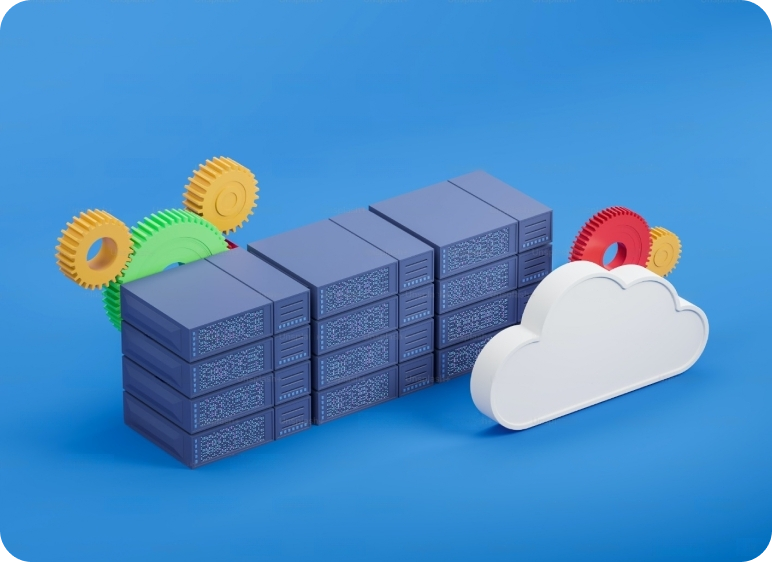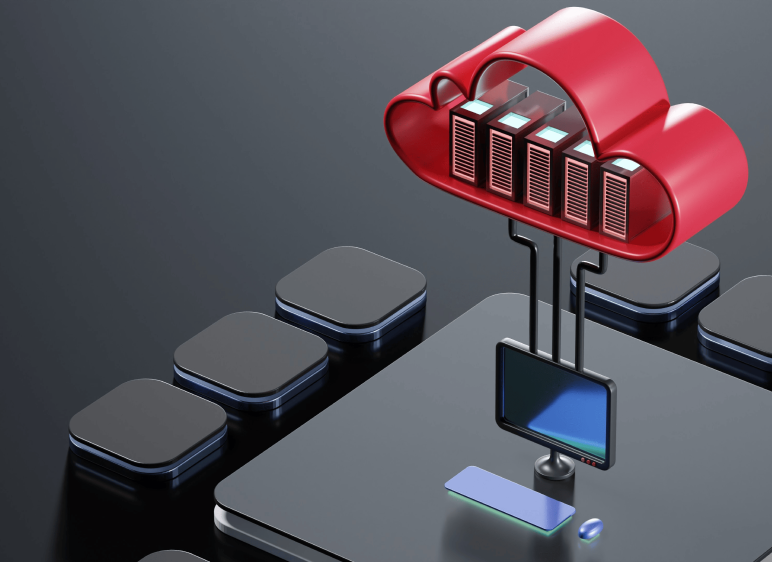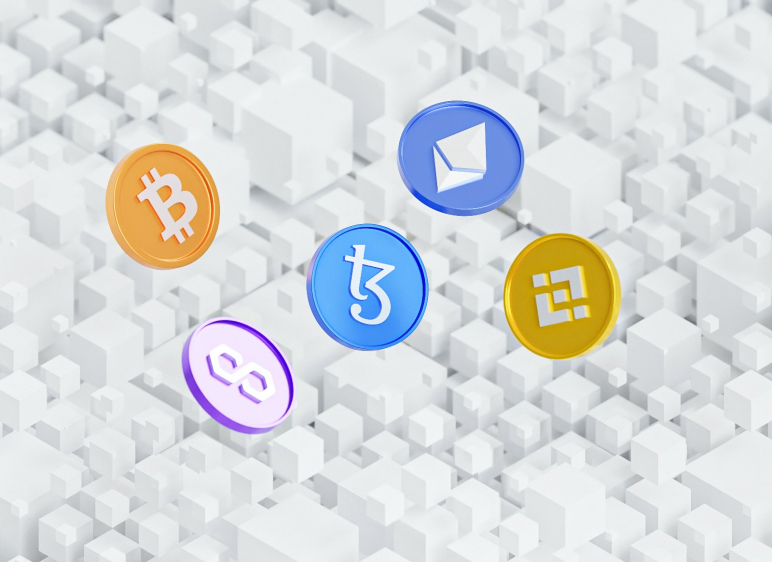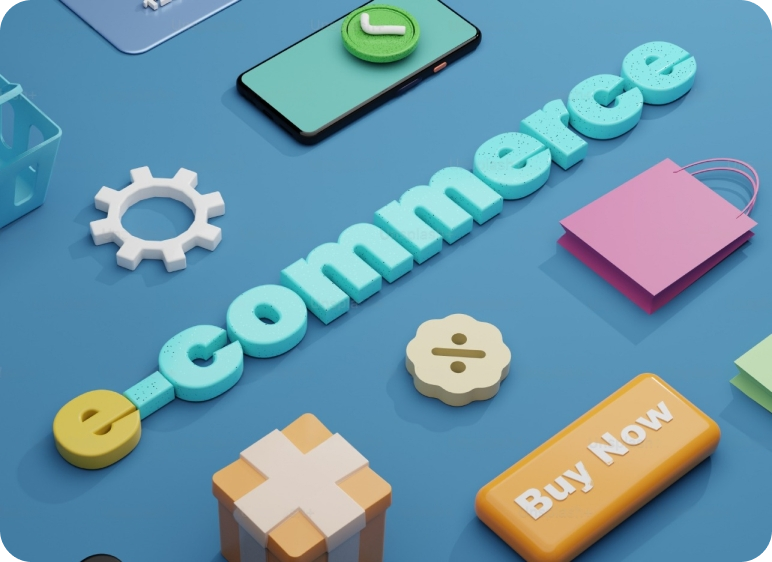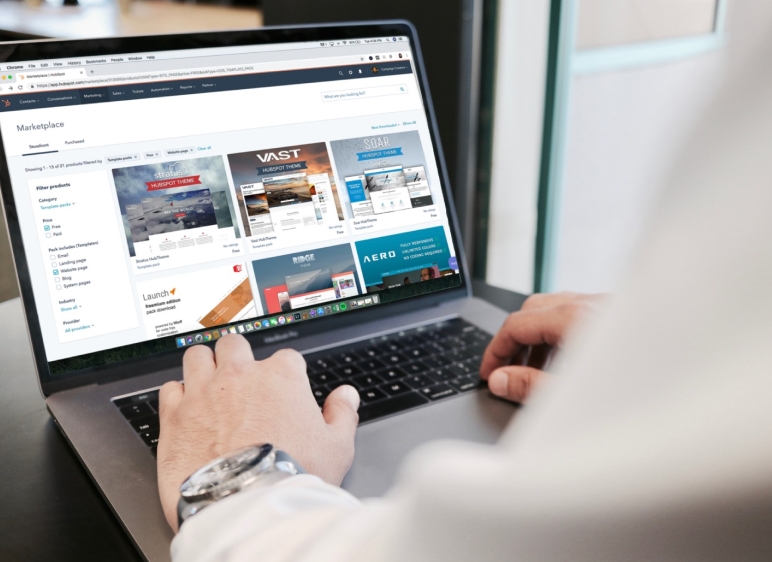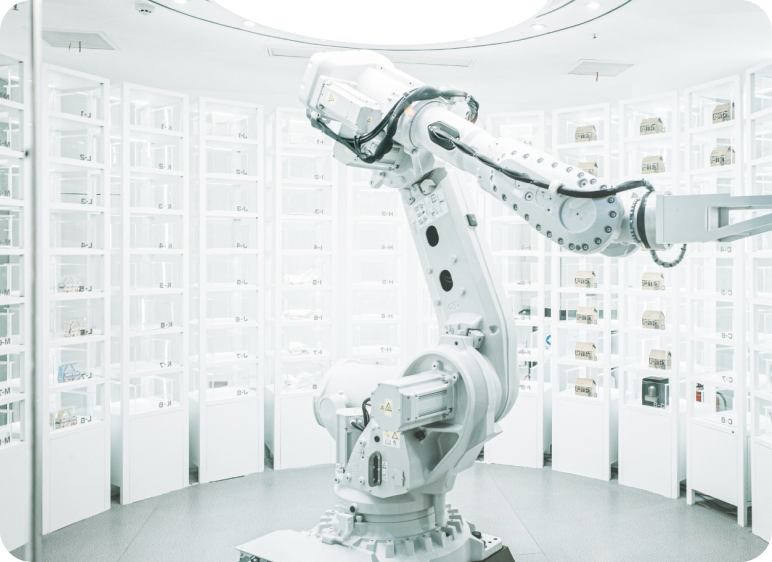Product Development

The Journey of a thousand miles begins whis one step
lao tzu
New Product Development Process: Everything You Need to Know
Developing a new product can provide difficulties. You possess a concept that has the potential to provide worth to a particular market, yet you lack clarity on the precise method of introducing your product to that market. This approach can be particularly challenging for individuals who lack prior experience, as they may be uncertain about the initial steps to take. Fortunately, there is a well-defined blueprint in the new product development process, which serves as a strategic framework to actualise your ideas. Continue reading to learn the process.
Who Takes Part in the Process?
Product managers play a crucial role in driving the strategic direction of the new product development process. They are responsible for determining the success or failure of the company’s products. Nevertheless, this technique encompasses more than just a duty related to product management. The subsequent teams are required to collaborate and contribute to the development of the product:
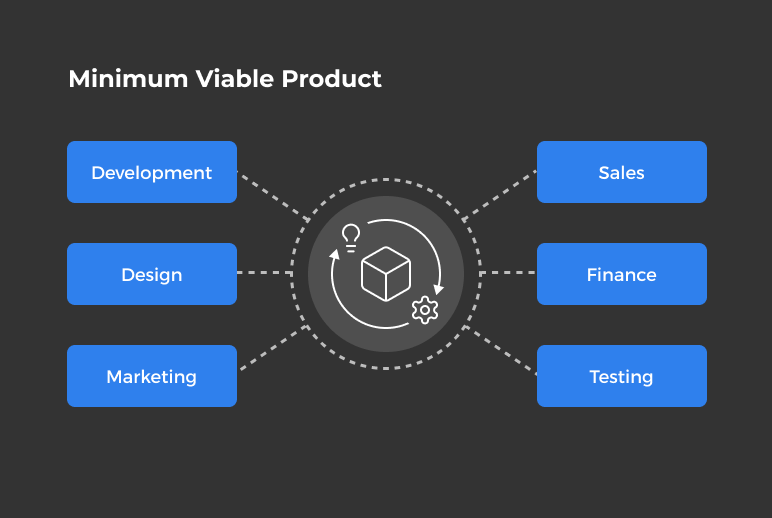
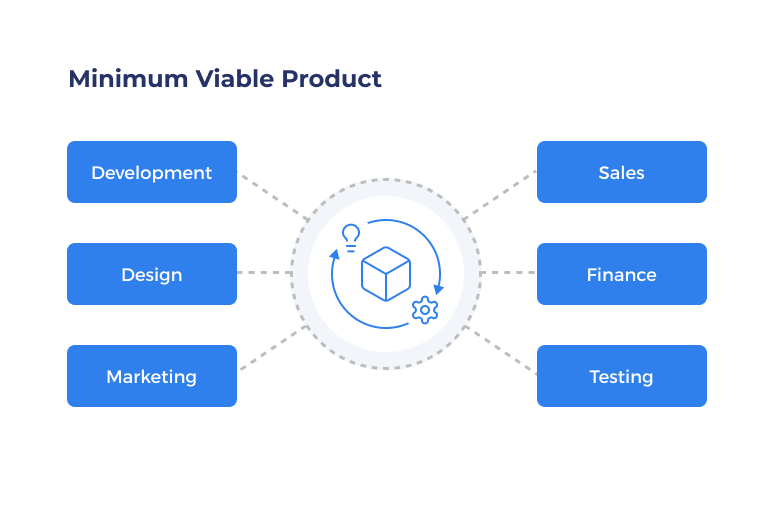
Product managers act as the strategic leaders of the development process. The cross-functional team is assembled, and the overarching objectives and plans for the product are communicated through the product roadmap. The team’s progress is monitored and recorded.
Things to Consider Before Developing a New Product
Before developing a new product, let us consider some prerequisites for product creation. Before creating a product, it is crucial to consider the following factors to optimise time and effort.
Is there a demand for the goods in the market? The prospective market size of the product will be contingent upon the significance and frequency with which the anticipated development meets the demand. If ideas mainly drive your concept, it is possible that there may not be a pre-existing demand for the product. In such cases, it becomes necessary to actively promote and persuade the market to successfully sell the product.
What is the distribution method for delivering the goods to its customers? Can the product idea be transported and delivered to the target market, or will it be necessary to employ creativity and establish new distribution partnerships? Which competitors will it encounter? Upon its introduction, will the product be a replica that competes in an established market, necessitating a more compelling value offer than its competitors and substantial efforts to acquire customers? Occasionally, rivals are more desirable as they indicate a need for the goods. Will the product be distinct and have less competition, allowing you to focus on differentiating it from the prevailing industry standard?
New Product Development Process
New product development encompasses the comprehensive process of introducing a novel product to the market, starting from generating ideas, assessing its compatibility with the market, refining it through prototyping, and ultimately achieving commercialisation.
Despite being a potentially time-consuming procedure that occasionally involves repetition, this is undertaken to guarantee that your product attains its highest level of quality prior to being delivered to customers and effectively addressing their requirements.
Let us review the distinct phases involved in the process of developing a new product.
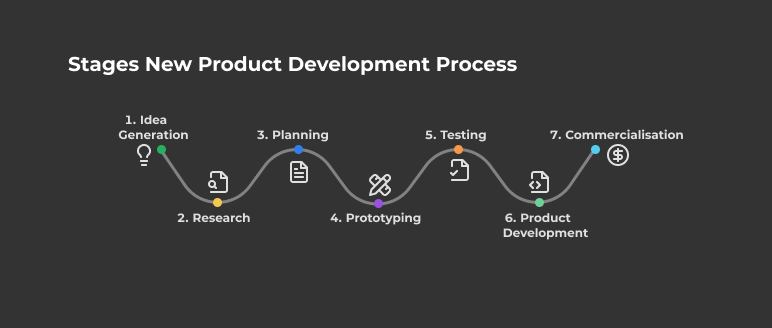
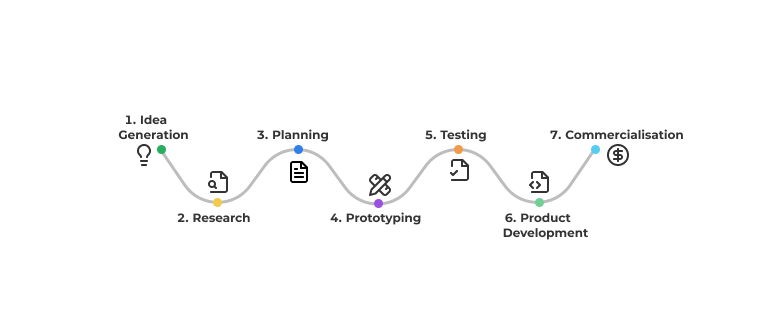
1. Idea Generation
The new product development process begins with the generation of ideas, wherein you engage in brainstorming sessions to conceive an idea (or ideas) that will effectively address an existing customer need through a novel and inventive approach. When generating ideas to address client demands, it is crucial to possess a comprehensive awareness of your target market and the specific challenges they face that you want to resolve.
The preliminary idea generation phase might be as uncomplicated as posing, “What if we pursued this approach?” Subsequently, they exhibit enhanced resilience during the research phase.
Useful Tips
There are numerous approaches to conceptualize a product idea. The process often becomes time-consuming when considering opinions, user feedback, valuable recommendations, and market feedback. To enhance the clarity of a product’s concept, it is advisable to document your thoughts and ideas on paper as you go.
Provide a detailed explanation of the primary characteristics, the specific user requirements it fulfils, and the current target audience. Please compose a concise synopsis of the concept.
Brainstorming: A structured session for generating ideas is an excellent opportunity to discover new concepts. Ensure to diligently record observations during the session and maintain a receptive mindset throughout.
Evidence of concept: Communicate your product idea to others. You may receive important recommendations to enhance the appeal and competitiveness of your product.
2. Research
Once you have conceived a product idea, the subsequent phase involves researching to elaborate and refine it. There are other measures you can implement to accomplish this, such as:
- Conduct market research to ascertain the prevailing sentiment within your industry and determine if there are any gaps in the market that your product can fill, as well as to assess its potential demand.
- Offerings will help you determine any perceived weaknesses you can address in your offering to serve the needs of your target market better.
At this stage, you have the opportunity to obtain preliminary input from clients regarding their opinions on your ideas before establishing a definitive definition for your product. An optimal method for getting this feedback is utilising surveys, which allow for efficient and expeditious gathering of data from current clientele. A sophisticated tool such as Lucky Orange enables you to generate these surveys effortlessly. With this tool, you can pose multiple- choice inquiries regarding the many product categories that may pique their interest. Additionally, you can include open-ended questions that give you a deeper understanding of client perspectives.
This stage may include some iteration as your research may indicate the need to enhance your initial ideas and modify the scope of your research before proceeding to the next stage.
Useful Tips
Online research: Most market research may be conducted using online resources. A plethora of industry statistics can be accessed through services such as Statista, and the frequency of Google searches is expected to escalate further.
Fluctuations: It is essential to bear in mind that circumstances are ever-evolving. Developing a market hypothesis that adjusts your market size estimations and uncovers intriguing information about your product’s market may be beneficial.
3. Planning
In the third phase, known as planning, you develop a definitive concept for the end product by building upon your initial idea and study. Subsequently, you commence devising strategies to actualize this concept.
Upon establishing the specifications of your ultimate product, it is imperative to commence strategizing the necessary resources required for its creation. For instance, while developing a tangible product, procuring the essential materials or establishing collaborations with production partners who can aid in the manufacturing process is imperative.
Planning includes devising a marketing strategy that will facilitate the effective promotion of your product once completed and developing price models that are logical for your product and that your buyers will be willing to pay.
It is essential to determine the teams participating in the product development process, including marketing teams responsible for promoting the product and potential external partners involved in production.
Useful Tips
A practical approach involves formulating a comprehensive business plan encompassing two distinct phases: one for the complete product development process and another for the launch. The variables in each step will be specific and may require different types of investments.
Expenses related to the product development phase encompass the duration dedicated to conducting research, purchasing reports and external expertise, and fabricating prototypes. The business strategy for the launch phase will determine the permissible investment amount.
Proposed conjectures: Employing fundamental convictions will invariably pertain to the most pivotal inquiries in any business proposal. Ensure that they are succinct and document them in written form.
Simulations: The most effective business strategies integrate hypotheses stated as variables to enable simulations.
4. Prototyping
The prototyping phase involves the creation of a preliminary product that serves as a representation of the final product to be manufactured on a large scale.
This prototype is commonly known as a minimal viable product (MVP), representing a simplified iteration of your tool that closely resembles the final product. It serves the purpose of providing an understanding of its functionality and pinpointing areas that require enhancement.
You have the option to create numerous prototypes and alternate between this phase and the testing phase until you achieve a definitive prototype.
Useful Tips
It is optimal for you to actively engage in the construction of the prototype. However, on certain occasions, it may be necessary to delegate the task to an external party due to the unavailability of the required equipment or supplies to create a tangible prototype. It is imperative to meticulously outline the technical specs of the product in this scenario.
Grant permission for others to conduct tests on it: Undoubtedly, testing serves as one of the primary objectives of the prototype. Permit others to attempt it as they require access to your profound expertise. Informative answers occur spontaneously.
5. Testing
Prior to introducing your product, it is imperative to conduct thorough testing to verify its functionality and usefulness in addressing your customers’ demands as claimed. During this stage, you will present your prototypes to the intended audience and solicit specific input on the functionality of the product.
Fundamentally, you desire your product to be employed in scenarios that closely resemble practical applications, enabling you to discern precisely what is effective and what is not. Occasionally, the outcomes of your testing may necessitate revisiting and modifying your prototype, as previously said.
Upon reaching the point where you perceive your prototype to be complete and capable of addressing your customer’s requirements, you will commence the process of product development.
Useful Tips
You must expedite each stage of the product development process as if it has already been finalised. To effectively present your idea,
it is advisable to provide a comprehensive description of the market and your product, showcase a prototype, propose a suitable price point, and attract a diverse pool of possible initial consumers. Maintain the speed: Testing initiatives are characterized by a specified time limit and a specific objective to achieve. You must maintain pace.
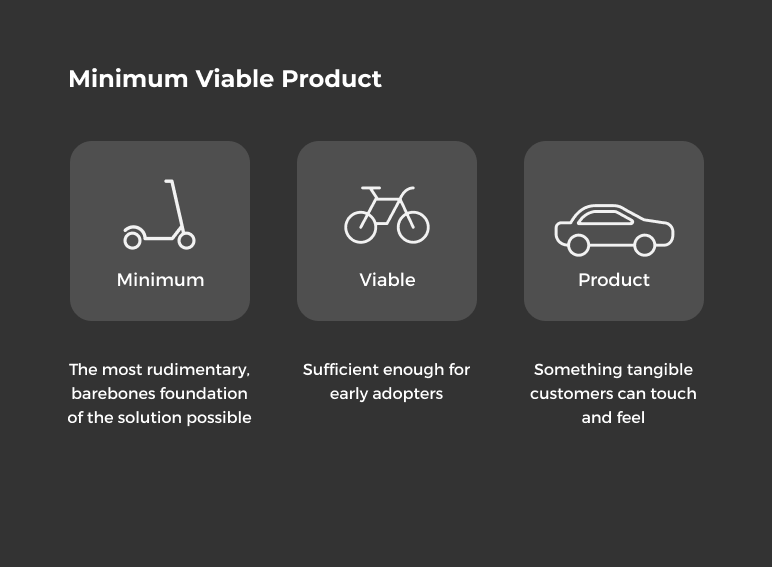
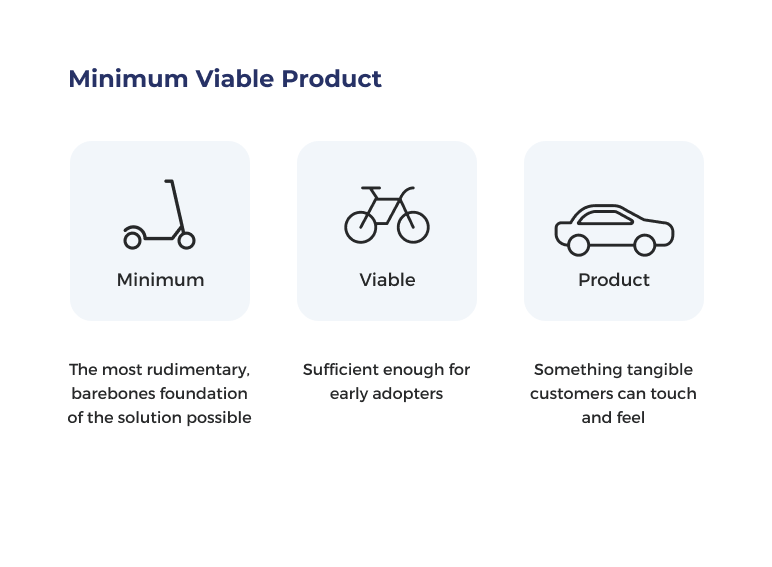
An ideal iteration of your product, known as a Minimum Viable Product (MVP), should possess a minimal set of features that effectively showcase the credibility of your value proposition. According to Eric Reis, the author of The Lean Startup and founder of the startup MVP, an MVP is the initial version of a new product that allows a team to collect the most reliable consumer insights with minimal effort.
The minimum viable product (MVP) serves as a means to assess the willingness of your target market to adopt and utilise your product. This strategy is simple and highly effective. A Minimum Viable Product encompasses three essential characteristics:
- Individuals are first inclined to utilise or acquire it due to its inherent value.
- It presents ample proof of prospective future advantages to retain early adopters.
- It establishes a feedback mechanism to guide future improvement.
The development team of an MVP will prioritise essential requirements and provide supplementary functionalities based on insights gained from the target market’s demands and preferences, observed through actual customer usage. If user feedback diverges dramatically from the initial project, the product may undergo substantial changes or even be discontinued. Conversely, the development teams will expend resources (efforts, time, money, or promotion) solely on a product that lacks demand, desire, or enjoyment from the public. The primary emphasis lies in acquiring knowledge during the process of product creation through the collection of data from clients who have already undergone validation. Commence with surveys or forecasts, but conducting field testing is more effective in validating marketing hypotheses. By observing users while they interact with the product, more dependable findings and feedback can be obtained. An often-made error is launching a product that falls far short of users’ expectations, making it less likely to succeed. The Minimum Viable Product (MVP) strategy is typically adequate for technological products utilized by consumers actively willing to provide meaningful feedback for improving or updating the product.
6. Product Development
This phase entails the development of the ultimate product that will be brought to market upon its completion. Utilise the knowledge acquired from testing your Minimum Viable Product (MVP) to refine your prototype and initiate large-scale manufacturing.
The process of product development may vary depending on the nature of your firm. For instance, if you operate a SaaS business, your internal software development or programming teams will probably focus on completing the code. If you manufacture a tangible item, you have the option to delegate the labour for specific parts to external sources and then bring together the finished products in your storage facility.
Regardless of your chosen approach, the planning phase should have enabled you to determine the trajectory of your product development.
Useful Tips
It is advisable to draft requirements with greater precision to minimise unexpected occurrences. Suppose your product is tangible, and you are now at this process stage. In that case, you may be outsourced to an external company in a different nation. The efficacy of the design and production process will be contingent upon proficient project management.
Prepare for unforeseen circumstances. You are facing the most significant danger level during this critical process stage. Many variables are outside of your influence, so being ready for unexpected events is imperative.
It is essential always to have a surplus. Ensure to incorporate contingency plans for unexpected delays when setting a launch date.
7. Commercialisation
The ultimate phase of your novel product development process is commercialization, wherein you launch your products. This represents the pinnacle of your ideation, research, and iterative process, when your target audiences may finally utilize the product or solution that you have developed.
You will implement your marketing strategies to raise awareness among your target audience about your new product and execute campaigns that will attract and convert them into consumers.
Despite being the last phase, numerous organizations introduce their products and then make enhancements based on customer input and market dynamics to deliver an optimal customer experience consistently.
Useful Tips
During this phase, you will choose the approach you will use to reach your intended audience, establish the pricing structure for your new product, devise the financial operations of your firm, design the layout of your conversion funnel, and outline the sales methods you will implement. You will also indicate how the end user will receive it.
Adapt and adjust quickly. Maintain flexibility in your plans. Allocate additional resources to the channels where you achieve the highest success.
From Brainstorming To Reality
Upon concluding your new product development process, you will have successfully materialized your brainstorming ideas and produced an actual product or service that effectively addresses a customer’s requirement. Discovering success entails developing a valuable methodology that can be duplicated, enabling ongoing innovation and the creation of new goods to provide clients with the desired pleasurable experiences.
Product Development Examples and Why They Work
Creating a product, from its initial idea to its final launch, is filled with risks, such as inadequate task and priority management and a lack of comprehension of client needs. Numerous product development failures exist, spanning from Betamax to Google Glass.
Implementing a robust product development plan can effectively mitigate the risk of encountering these issues. The subsequent instances of product creation provide a comprehensive outline of the procedure for diverse organizations in different industries. It is imperative to witness the implementation of the product development life cycle and derive valuable knowledge from the accomplishments of other organisations.
Dropbox
Utilising insights derived from their usage statistics, their platform, originally designed as a file-sharing service, has evolved into a collaborative team tool. When it was first developed as a peer-to- peer network, the primary objective of Dropbox was to streamline the information-sharing process among individuals.
Including version history, folder management, and admin rights in Dropbox was previously limited to single-user functionality. However, these features expanded in response to customer demand for collaborative capabilities with their teams. For example, the developer launched Dropbox Paper in response to their team’s identified requirement for collaborative documentation.
Netflix first operated as a DVD rental service. Netflix’s transformation into a streaming media platform exemplifies how a company can successfully adjust to market demands. As one of the most prominent over-the-top (OTT) platforms, Netflix’s move is a prime example of business adaptability. Their transition from licencing pre-existing videos to producing original content exemplifies a deep comprehension of customer expectations for an OTT streaming service.
While evolving, Netflix identified market needs and devised products to meet them. Netflix’s decision-making process is driven by thorough customer data analysis, encompassing various aspects, such as the initial focus on convenient DVD access and the current emphasis on personalized account profiles and on-demand streaming. Each upgrade has also facilitated their progressive increase in prices.
Houseparty
The social media application Houseparty serves as a prime example of the slow evolution of products. To enhance user engagement, they required strategies as their platform grew and evolved to engage with individuals and small groups. Houseparty utilized Taplytics to perform A/B tests and usage experiments to gain further insights into the specific regions of the app where users faced the most significant challenges.
Houseparty conducted experiments to acquire insights into the factors that decreased user engagement. As a consequence, they identified an opportunity to modify their onboarding process. They observed improvements in the vital app utilization metrics mentioned below by tweaking the onboarding method.
A 15% rise in user contact authorization. A surge of 9% in push notification opt-ins.
Best Practices for Successful Product Development
Many organizations that continuously successfully deliver products to the market employ similar techniques but with variations in their specific methodologies. The following are some of the suggested methods for developing new products:
- Take into account the requirements and frustrations of your users from the start.
- Employ market analysis and user feedback. (Avoid innovating in isolation).
- Within your firm, engage in regular and frequent communication to effectively trade information and share insights.
- Utilize one of the abundant frameworks accessible for your product development procedure. Before embarking on development, it is essential to establish a system.
- Validate your product concepts as soon as feasible in the process. Before the official distribution of a product, it is possible to carry out a “soft launch” to evaluate its performance with many early adopters.
- Engage your cross-functional team in the ideation and brainstorming stages. Valuable market insights can be acquired from diverse sources.
- Devise a rational schedule for the development process. Focus exclusively on concepts your organization possesses the necessary resources and expertise to execute.





